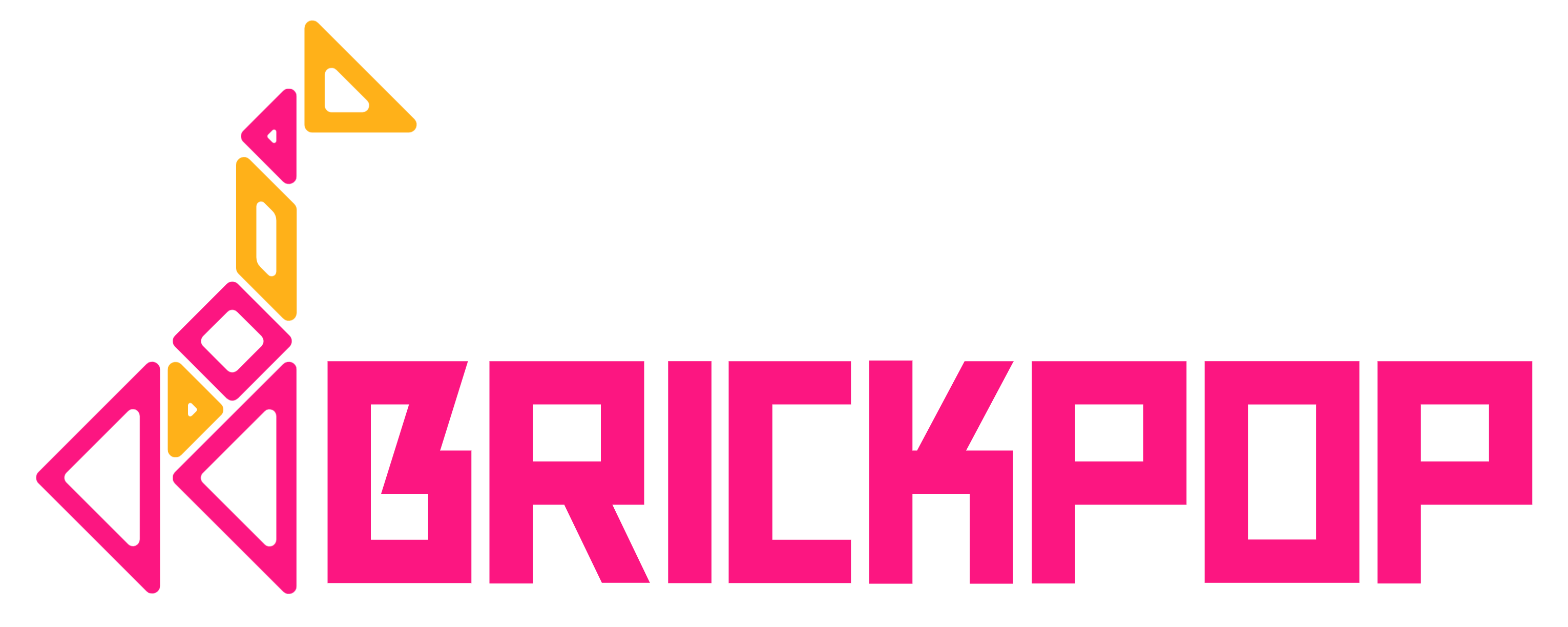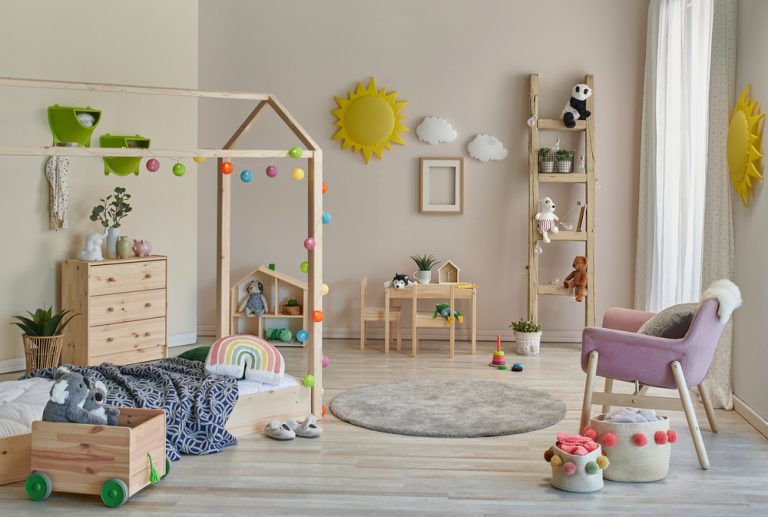Montessori Reading: How To Teach Children to Read

The Montessori method is a unique educational approach that fosters a love of reading in children. By understanding sensitive learning periods and using specialized reading materials, the Montessori method sets children up for reading success.
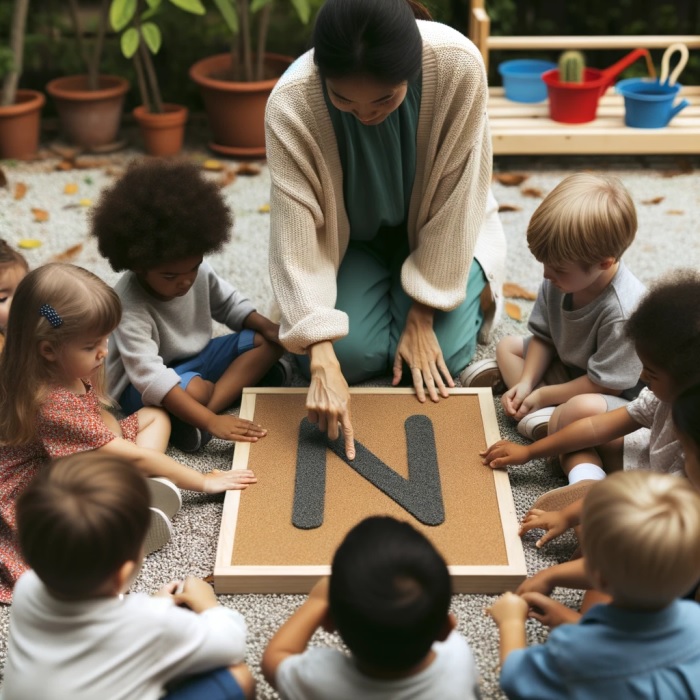
Natural Sensitive Periods For Reading
Children have natural sensitive periods where they are eager and ready to acquire certain skills like reading. The Montessori method capitalizes on these windows of opportunity to make reading development feel effortless for kids. Activities are tailored to maximize learning during these sensitive periods. The Montessori classroom nurtures reading ability through purposeful activities matched to a child’s sensitive period for optimal development from ages 3 to 6.
Ages 3-4: Building Pre-Reading Foundations
- Learn and recognize alphabet letters through multi-sensory sandpaper letters
- Trace letters and shapes to develop fine motor coordination
- Match picture cards to build one-to-one correspondence skills
- Learn letter sounds and match them to objects using the movable alphabet
- Develop listening skills through stories, songs, and oral language
Age 4: Writing to Build Literacy
- Use the movable alphabet pieces to form simple phonetic words
- Associate sounds with written letters through tactile learning
- Develop pencil grip, shape formation, and letter writing fluency
- Write words using chalkboards, sand trays, and tracing activities
- Compose simple words and sentences with guidance
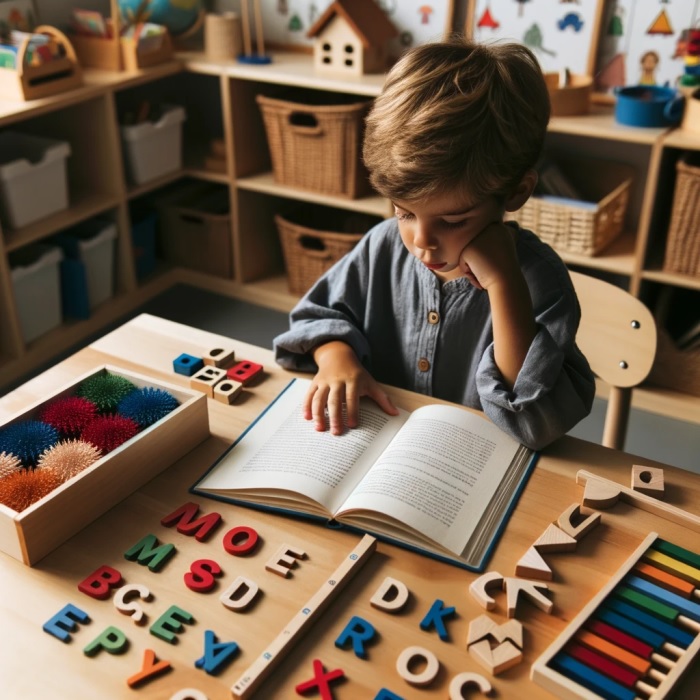
Ages 4-5: Emerging Reading Abilities
- Begin working through the Montessori pink reading series with phonetic 3-letter words
- Use context pictures to visually match written words
- Blend letter sounds to decode new words
- Read simple phonetic books to apply skills
- Expand sight word vocabulary
- Follow along as the teacher reads short stories
Ages 5-6: Advancing Towards Fluency
- Progress through the blue series introducing phonograms and word endings
- Work with grammar symbols to understand word functions
- Read from the green series with short phonetic sentences and stories
- Answer comprehension questions about stories
- Learn to self-correct reading mistakes using context
- Develop oral fluency through reading aloud
- Expand independent reading skills with a variety of books
How Montessori Teaches Reading
The Montessori approach follows a well-defined path using hands-on materials and activities that allow children to progressively develop reading mastery at their own pace.
Multi-Sensory Reading Foundations
Children are first introduced to letter shapes and sounds through multi-sensory sandbox letters. Tracing the letters with their fingers cements the phonetic connections. These tactile letters act as anchors for learning the relationships between sounds and symbols.
Writing As a Precursor to Reading
A key tenet of Montessori is that writing comes before reading instruction. Children as young as 3 begin building words using movable wooden alphabets. Manipulating letters to form words helps cement the letter-sound connection in a concrete way. This paves the path for decoding sounds into words.
Mastery of Phonics
Montessori reading instruction is founded on intensive phonics practice. Children master recognizing and blending letter sounds, then advance to phonograms, digraphs, and other letter groupings. Activities like matching picture cards to phonetic words reinforce sound connections.
Comprehension Through Visualization
While phonics provides the decoding basis, visualization builds comprehension. Children learn to create mental pictures as they follow stories and lessons. Seeing and manipulating story sequence cards also develops this visualization skill which is key for comprehension.
Self-Paced Learning
There is no rushed, one-size-fits-all approach. Children are empowered to perfect each skill at their own pace with the guidance of teachers. This ensures a solid, confidence-building foundation. Reading becomes an exciting self-driven journey.
Montessori Reading Materials
A key part of the Montessori approach is the specialized educational materials used in the classroom. These hands-on materials are designed to appeal to young children’s senses and build key skills for reading proficiency. Let’s explore some of the most important Montessori reading materials.

Sandpaper Letters
One of the first reading materials a child will encounter in a Montessori classroom is the sandpaper letters. These tactile letters allow children to trace the shape of each letter with their fingers. Feeling the shape helps cement proper letter formation in their minds. The sandpaper provides sensory feedback as children sound out the letter and connect it to the phonetic sound. Sandpaper letters lay the foundation for writing and word construction.

Movable Alphabet
Once children have learned their letter sounds, they are ready for the movable alphabet. This material consists of a set of wooden letter tiles that children can move around to form words. Building simple phonetic words with the movable alphabet is an important predecessor to reading words on a page. The hands-on process helps children understand how sounds connect to make words. This material transitions students from writing to decoding.

Word Building with Objects and Picture Cards
Another way children build reading readiness with the movable alphabet is by constructing words to match objects or picture cards. The teacher puts an object like a bell in front of the child. The child forms the word “bell” with the letter tiles. This activity builds the connection between the written word, the sound, and the real object it represents.
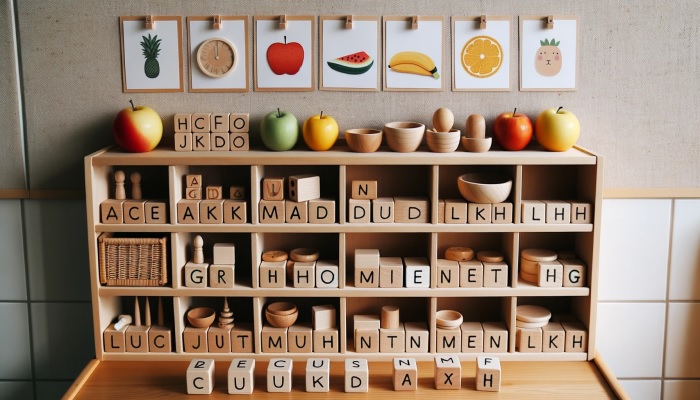
Pink, Blue, and Green Reading Series
After students have gained confidence with short phonetic words, they progress through the pink, blue, and green reading series. This sequenced reading curriculum uses phonetic words and sentences of increasing complexity. The pink series introduces phonetic three-letter words. The blue series focuses on phonograms and word endings. The green series features short sentences and stories.
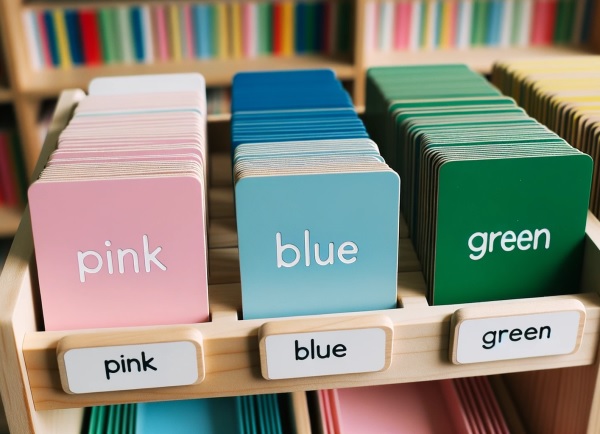
Phonetic Books
Young readers continue to polish their skills with sets of small phonetic books. These miniature books allow them to apply their decoding abilities to read full stories independently. As their skills grow, children move on to reading a wide variety of beautiful picture books on topics that interest them.

Grammar Symbols
Sandpaper letters focus on individual letter sounds, but children must also understand how words work together in sentences. Montessori grammar materials use symbols to represent parts of speech like nouns, verbs, and adjectives. Learning grammar visually helps children grasp the structure of language.
Montessori Reading At Home: Creating a Montessori Reading Program & Curriculum
Bring the Montessori method home to promote your child’s reading success with these practical steps:
Create a Literacy-Rich Environment
Surround your child with words and letters. Label furniture and objects around the house. Display the alphabet prominently. Add a cozy reading corner stocked with engaging books. The Montessori learning environment can easily be replicated at home to foster successful reading skills. Follow this Montessori curriculum map to set your child up for literacy achievement.

Immerse Your Child in Language
Daily read-aloud, even from infancy, exposes children to new vocabulary, language patterns, and storytelling. Discuss new words and ideas encountered in books. Sing songs and recite nursery rhymes full of rhythm and rhyme.
Introduce Letter Sounds Systematically
Use sandpaper letters for tactile recognition of letter shapes and phonetic sounds. Sing the alphabet song while pointing to the letters. Make letter hunting into a game of I Spy.
Build Words Through Early Writing
Use movable alphabet tiles to construct simple phonetic words. Practice properly forming letters with sand trays, chalkboards, and tracing activities. Collaboratively write short sentences.
Nurture Emerging Reading Skills
When ready, introduce the Montessori pink series with simple three-letter phonetic words. Track words while reading together. Prompt your child to sound out unfamiliar words using phonetic knowledge.
Increase Fluency Through Practice
Transition to the blue and green series when your child is developmentally ready. Take turns reading paragraphs aloud. Allow your child to select books that pique their interest for independent reading time to build fluency.
Assess and Adjust Along the Way
Closely observe your child’s reading progress during daily reading sessions. Note when they reach development milestones and adjust activities accordingly to meet their needs.
Benefits of Montessori Reading
The Montessori approach to early reading instruction offers many advantages that foster literate, confident students.
Early Reading Skills
Montessori children routinely master reading basics like letter recognition, phonics, and sight words by ages 4 or 5. This early success builds motivation to advance skills.
Multi-Sensory Engagement
With hands-on materials like sandpaper letters and movable alphabets, Montessori activates multiple senses for deeper retention. Tactile, visual, auditory learning brings concepts to life.
Writing Dexterity
Writing letters and words is the cornerstone of Montessori literacy. Developing fine motor control and proper letter formation through writing strengthens later reading fluency.
Phonics Mastery
Using interactive materials to isolate, visualize, and manipulate sounds cements phonics rules essential for decoding words. Montessori builds this phonetic foundation.
Comprehension Focus
While phonics provides the skills to read words, Montessori emphasizes reading for meaning. Story visualization and discussions expand comprehension abilities.
Language Immersion
Labeling classroom objects, reading books, sharing stories, and celebrating language through song and poetry create a literacy-rich environment where reading thrives.
Montessori Reading Video
Reading and Writing in Montessori
Conclusion
The Montessori way of teaching reading sets kids up to succeed. By understanding when children are ready to learn, using child-focused activities, and having hands-on materials, Montessori makes reading fun for young kids. Children feel proud as they learn important skills like phonics and writing to become independent readers. The focus on understanding, thinking critically, and self-correcting helps students get meaning from what they read, not just read words. Reading becomes an exciting adventure, not a chore. While regular school struggles with reading, Montessori develops strong, eager readers ready to start a lifetime of learning. For parents looking for effective, age-appropriate reading teaching, Montessori has proven benefits. Each child masters this key skill on their own timeline which opens doors to doing better in school and having a richer mind. Montessori truly sparks a love of reading that lasts.
